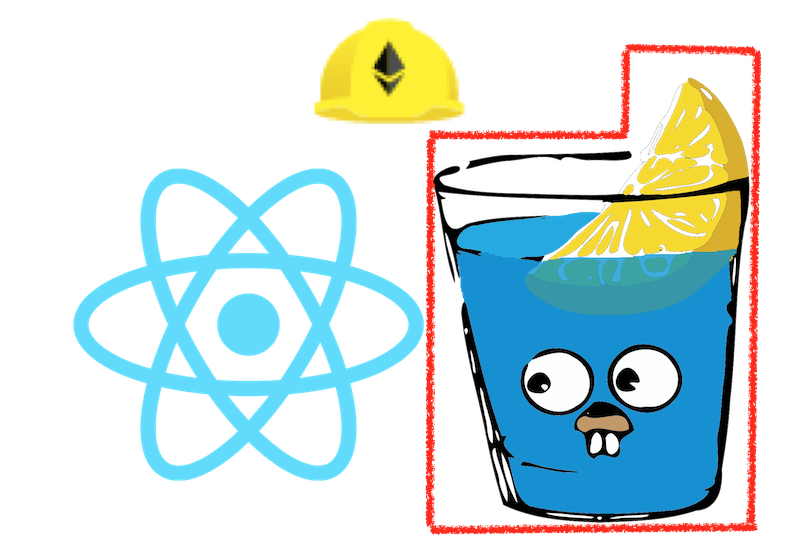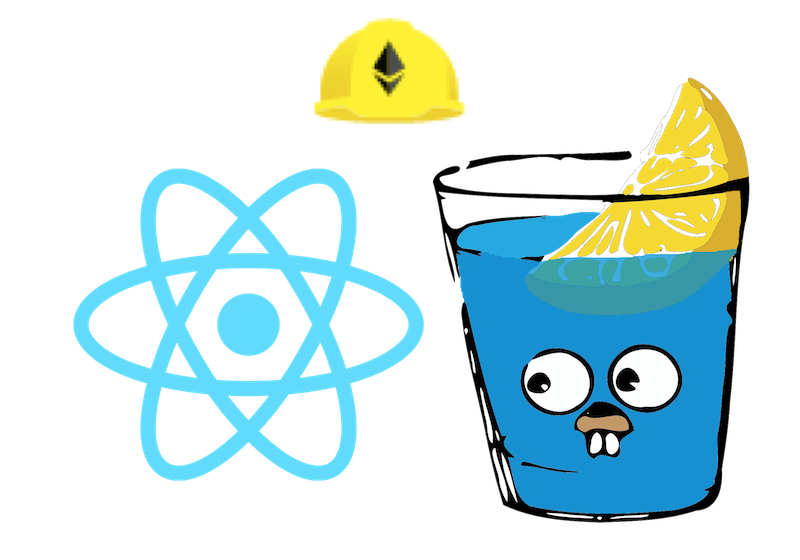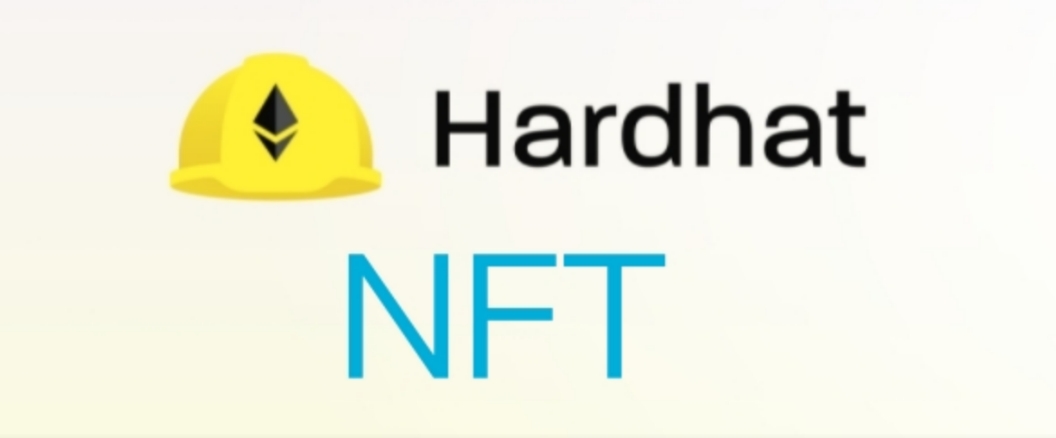Blockchain fullstack structure - Part 2 - Hardhat
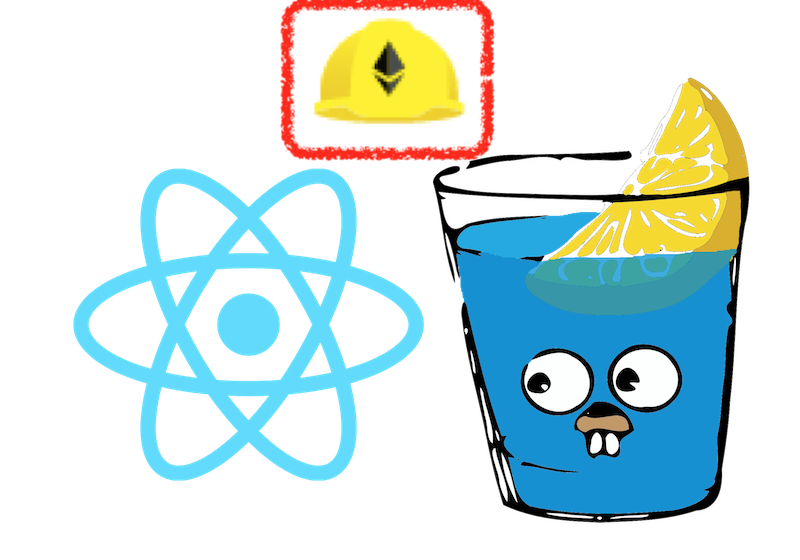
This is a series articles of Blockchain fullstack structure, please read Part 1 Introduction first. In this part, I will show how to set docker to Hardhat, but this is simpler than my previous article Hardhat Solidity NFT tutorial.
Project structure
Look my hardhat project structure first: 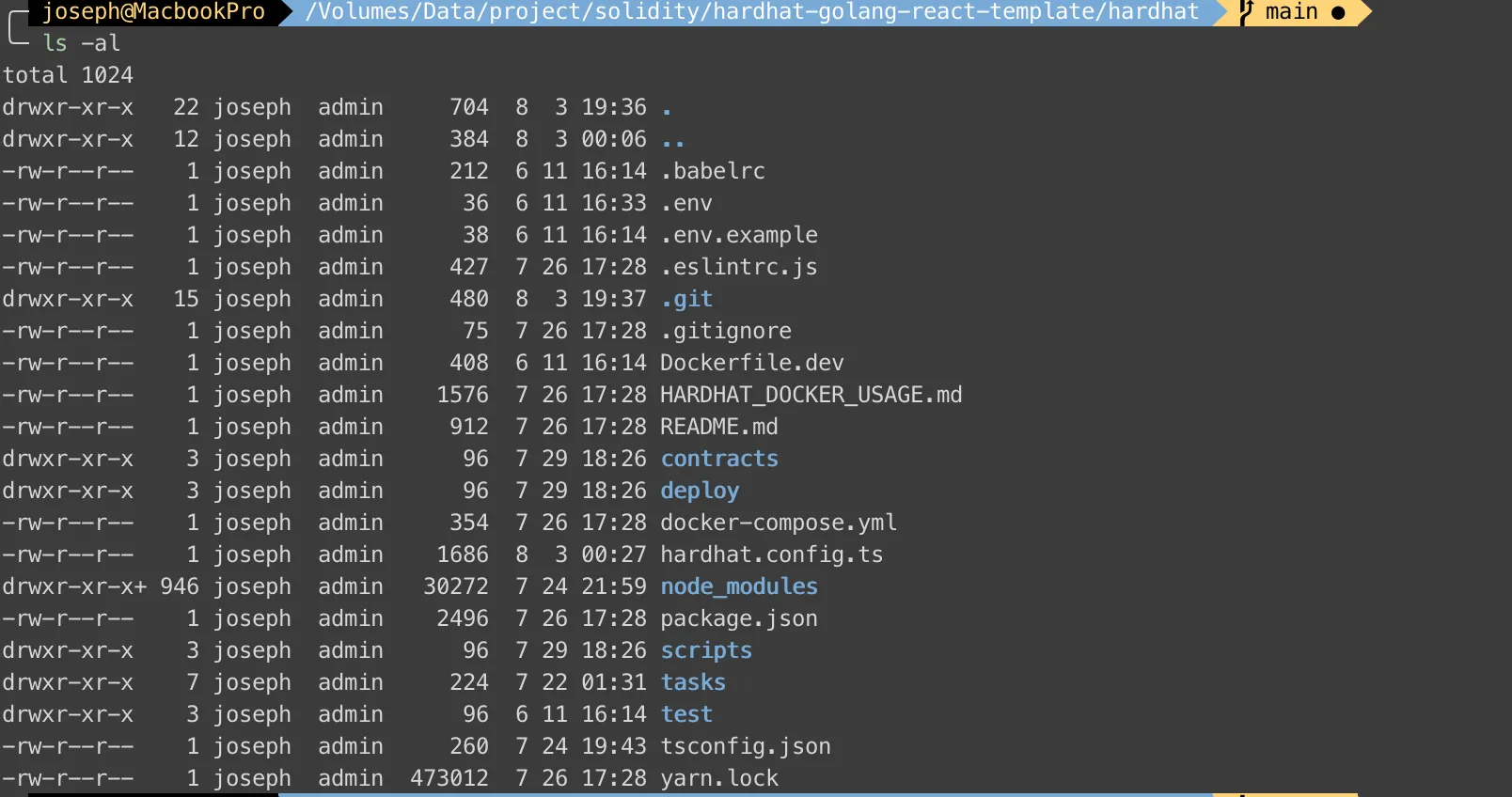
Let’s check my Dockerfile: Dockerfile.dev
FROM node:16
ENV APP_ROOT /app
RUN mkdir ${APP_ROOT}
WORKDIR ${APP_ROOT}
ADD . ${APP_ROOT}
RUN yarn install
RUN yarn global add \
solhint \
solc \
eslint \
typescript
EXPOSE 8545
CMD [ "yarn", "dev" ]docker-compose.yml
version: '3'
services:
####### Blockchain hardhat ##############
hardhat:
build:
context: .
dockerfile: Dockerfile.dev
volumes:
- .:/app
- ./node_modules:/app/node_modules
ports:
- 8545:8545I expose 8545 port so that I can connect to hardhat by http://docker.for.mac.localhost:8545 on my MacOS.
And, as I mentioned in previous post, I use hardhat-abi-exporter, so I have to run yarn to install it.
docker-compose exec hardhat yarn add --dev hardhat-abi-exporter
# OR
# docker-compose run --rm hardhat yarn add --dev hardhat-abi-exporterAnd I add abiExporter config to hardhat.config.ts
// import other packages.......
import 'hardhat-abi-exporter'
const config: HardhatUserConfig = {
solidity: "0.8.4",
defaultNetwork: 'localhost',
networks: {
...
...
},
abiExporter: {
path: './data/abi',
runOnCompile: true,
clear: true,
flat: true,
spacing: 2,
format: 'json'
}
}Because of this config, I can generate ABI by:
docker-compose run --rm hardhat yarn run hardhat export-abi --no-compile
Lastly, I use the simplest contract only set and get functions:
//SPDX-License-Identifier: Unlicense
pragma solidity ^0.8.4;
import "hardhat/console.sol";
contract Greeter {
string greeting;
constructor(string memory _greeting) {
console.log("Deploying a Greeter with greeting:", _greeting);
greeting = _greeting;
}
function greet() public view returns (string memory) {
console.log("greet function called ");
console.log("------ %s", greeting);
return greeting;
}
function setGreeting(string memory _greeting) public {
console.log("Changing greeting from '%s' to '%s'", greeting, _greeting);
console.log("sender: ", msg.sender);
greeting = _greeting;
}
}This contract just test the functions can be called from backend and frontend. That’s quite enough. The output is: 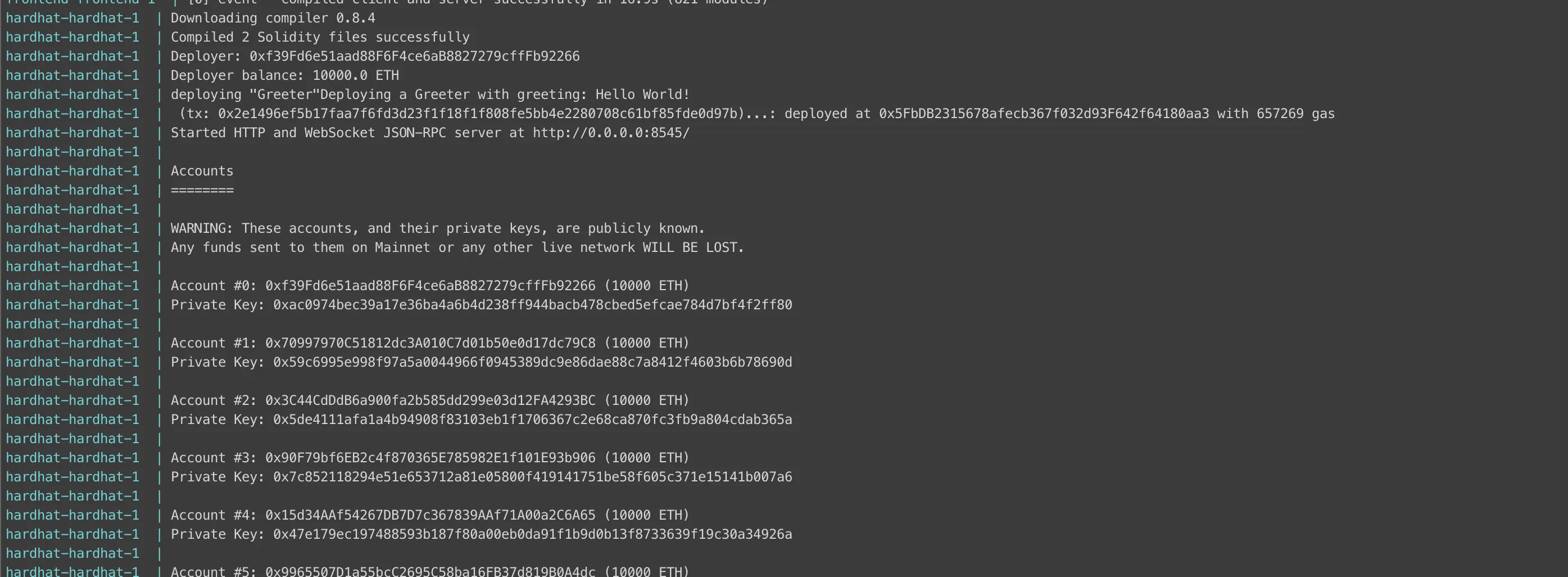
References
- Github: dApp-hardhat
- Hardhat docker example: Hardhat-template

